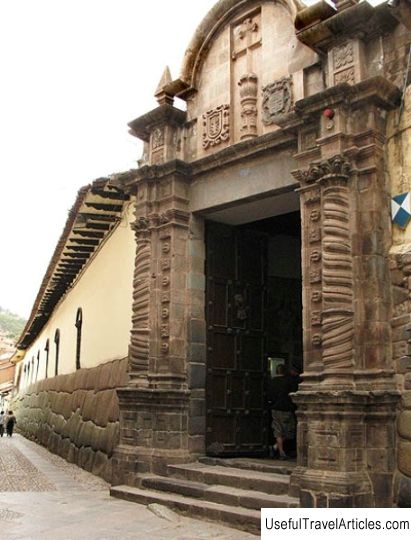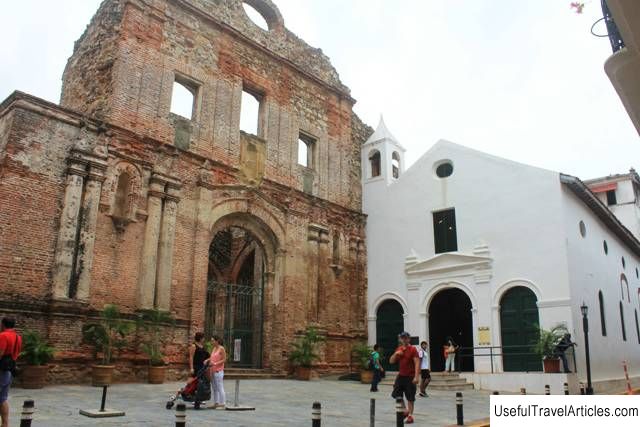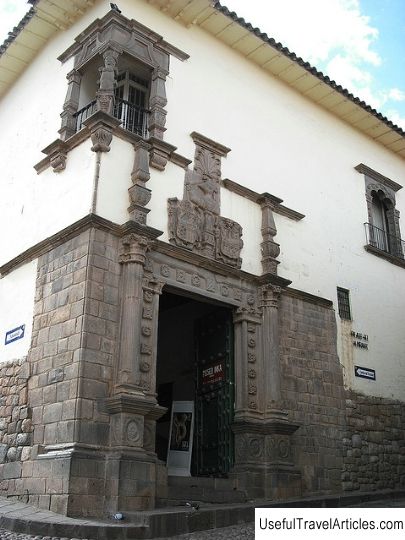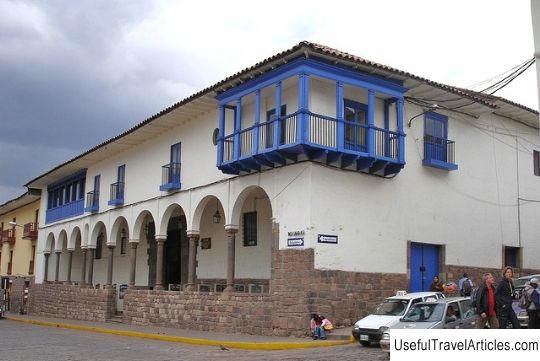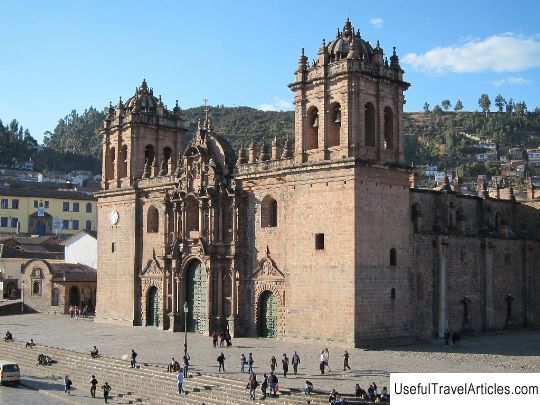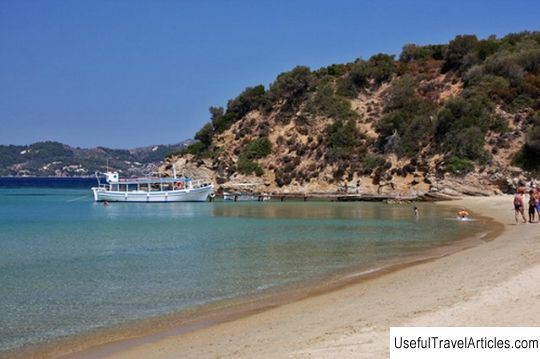Museum of Sacred Art (Museo de Arte Religioso) description and photos - Peru: Cuzco
Museum of Sacred Art (Museo de Arte Religioso) description and photos - Peru: Cusco. Detailed information about the attraction. Description, photographs and a map showing the nearest significant objects. The title in English is Museo de Arte Religioso. Photo and descriptionThe building that houses the Museum of Sacred Art was built between 1537 and 1538 on the foundations of the Roca Inca Palace, one block from Plaza de Armas in Cusco. During the Inca Empire (in the Quechua language Tahuantinsuyu - the largest Indian state in South America in the XI-XVI centuries), this place was the Inca Palace of Roca, where the ruler Hatun Rumiyok and his family lived, as well as in it housed the Panaka Indian brotherhood. Now you can see in the central part of the stone wall of the museum building a polygonal block - the famous stone of twelve corners, which the Inca Indians used in the construction of their buildings. The first bishop of Peru, Fray Vicente de Valverde, lived in this royal palace , his diocese stretched from Nicaragua to Tierra del Fuego and from the Pacific Ocean to the Atlantic. Then this building became the property of Pablo Costila and Gallineto, the Marquis of San Juan Buena Vista, whose remains are buried in the crypt of the Santo Domingo de Cuzco temple. Later the building became the property of the Contreras and Jaraba family, the Marquesses of Rocafuerte, who were the patrons of local artists. In 1948, Monsignor Felipe Santiago Hermoza y Sarmiento, the first archbishop of Cusco, acquired this palace with funds from the diocese. In 1957, after reconstruction, this building became the Palace of the Archbishop of Cusco, Monsignor Carlos Maria Jurgens. In 1966, Archbishop of Cusco, Monsignor Ricardo Duran Flores, took the first steps to transform the palace into a museum of religious art. which was opened in 1969 with the support of Don Jose Orihuela Jabar. Jose Orihuela Jabar Foundation donated 169 paintings and an ivory collection, crucifixes, furniture and images of high artistic value to the museum. Also donated was a gilded Baroque altar that was installed in the chapel of the archbishop's palace. The collection of the museum mainly consists of paintings of the religious art of the Cusco school. You can also appreciate the classic architecture of the colonial era of the building itself, walk through its courtyard, surrounded by arcades and decorated with mosaic tiles brought from Seville. In the halls of the museum you can see the works of Juan Marcos Zapata and other masters of painting of the colonial era, as well as paintings by the local artist Diego Quispe Tito. It's worth taking time to see the chapel, decorated in various styles, and the halls of the palace with amazing carpeting.         We also recommend reading Morne Seychelles National Park description and photos - Seychelles: Mahe Island Topic: Museum of Sacred Art (Museo de Arte Religioso) description and photos - Peru: Cuzco. |
